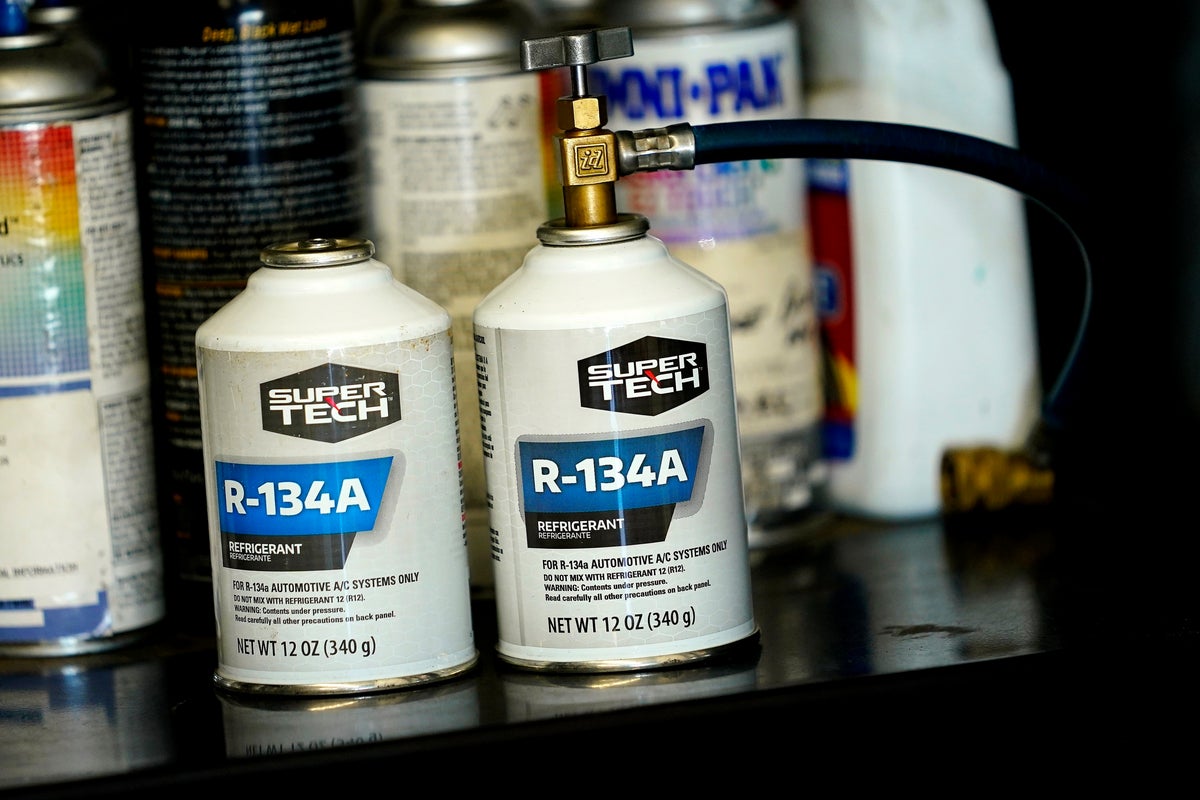
Air conditioning has made it possible to live comfortably in many hot places, but the special chemicals that makes it work are actually extremely hazardous to the climate.
Refrigerants used in fridges, freezers and cars change from a fluid to a gas to transport heat away from the place you want cooled.
In refrigerators, the refrigerant starts as a liquid and expands into a gas, which forces it to cool down. This chilled gas circulates through the fridge, absorbing heat as it flows along.
Once the chilled fluid has absorbed significant heat, say, from eggs you just hardboiled and placed inside, it gets squeezed in a compressor and gets even hotter. The refrigerant then flows through condenser coils where it releases its heat out and cools back into a liquid.
The cycle starts over when the refrigerant enters the expansion device, where the fluid spreads out, cools, and once again turns into a gas.
Air conditioners also use refrigerants and operate similarly to this, but they release their heat to the outdoors rather than your kitchen.
Refrigerants absorb a lot more heat than water or other common fluids, which makes them great for cooling systems but bad for climate change when they escape.
Some of the earlier refrigerant chemicals that allowed hot places like Phoenix, Arizona and Dubai to grow into population centers, were a family known as chlorofluorocarbons (CFCs), but scientists discovered that these were causing widespread damage to the ozone layer in the mid to late 1900s.
So countries came together and ratified the Montreal Protocol which went into effect in 1987 and banned CFCs. This is cited as one of the most successful international environmental laws ever.
The family of chemicals that replaced those CFCs was hydrofluorocarbons or HFCs. They were first commercialized in the 1990s. But these were found to be dangerous for the climate and were rapidly building up in the atmosphere as air conditioning spread across the world.
The way to compare damaging gases is “global warming potential” or GWP, which the Environmental Protection Agency defines as how much energy one ton of a gas can absorb over a certain period of time, compared to one ton of carbon dioxide. Over one century, the GWP of carbon dioxide is one, therefore. Methane, the second most important greenhouse gas after carbon dioxide is 28, or 28 times worse. The common refrigerant known as R-410A, has a global warming potential of 2,088.
In 2016, the Kigali Amendment to the Montreal Protocol phased down the use of climate-harming hydrofluorocarbons 85% by 2036, so that phasedown is currently happening.
According to the most recent comprehensive climate report from Intergovernmental Panel on Climate Change in 2021, this Kigali Agreement will meaningfully prevent some warming of the Earth if fully enforced.
In the United States, people are not allowed to intentionally release hydrofluorocarbons and other refrigerants under the Clean Air Act. When an appliance containing a refrigerant is disposed of, the EPA also requires the last person in the disposal process to recover the refrigerant to a certain level or verify that there hasn’t been any leakage.
However, accidents happen. When a car is totaled in a collision, all of that refrigerant escapes into the atmosphere. The EPA also restricts sales of refrigerants, but people can purchase small cans of certain HFCs in stores if they contain two pounds or less. When a car is dumped at a junk yard, personnel there are responsible for recovering the refrigerant.
Scientists say that lowering our emissions of HFCs will have a fairly quick payoff because most persist in the atmosphere for roughly 15 years, far less time than carbon dioxide.
——
Associated Press climate and environmental coverage receives support from several private foundations. See more about AP’s climate initiative here. The AP is solely responsible for all content.







